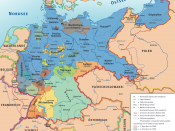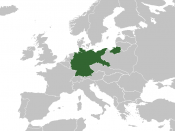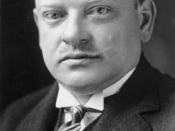The Weimar Republic was a new government set up in 1919 after a national assembly in the City of Weimar. It faced many problems and was doubtful from the start. This new government accepted the post-war treaties, and so were hated by the majority of Germans because of the loss of territory, reparations, the 'war-guilt clause' etc. To make things worse, Ebert wasn't a strong politician and was being pulled in two directions. The Constitution gave the President all leadership in 'times of emergency' something that he took for granted often. It also gave many German states too much power, and led to them disobeying the government often. The Army, led by the right wing, was not fully under the government's control; it failed to support government in many revolutions.
In 1923 after much discontent, Ebert left government and Gustav Stresemann became president. At first he opposed the Weimar Republic, but soon changed his mind when he realised the alternative, was chaos.
You could say Stresemann made vast improvements to Germany. In 1923, Stresemann's first move called in all the old, worthless marks and burned them. He replaced them with a new currency, 'Rentenmark' (worth 3,000 million old marks). In 1924, Stresemann's next achievement called off the 1923 Ruhr strike and started repaying reparations again; he was fortunate when the American Dawes Plan gave Germany more time to make the payments. Later that year Stresemann persuaded the French to leave the Ruhr. In 1925, Stresemann signed the Locarno Treaty, agreeing to the loss of Alsace-Lorraine. Due to this, in 1926, Germany was allowed to join the League of Nations and became a world power again.
Stresemann introduced reforms to make life better for the working classes (Labour Exchanges and unemployment pay) appealing to the public.
In 1929 the Young...


